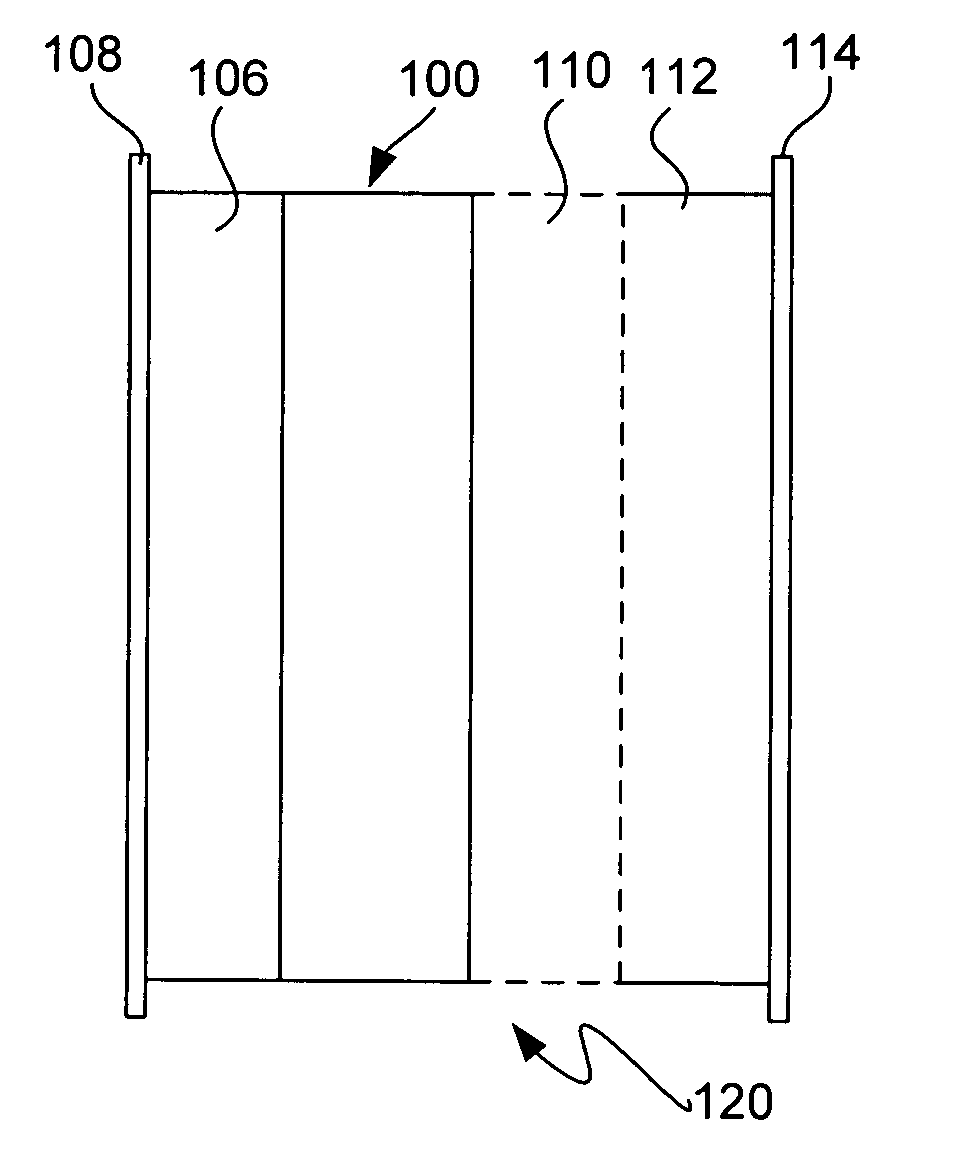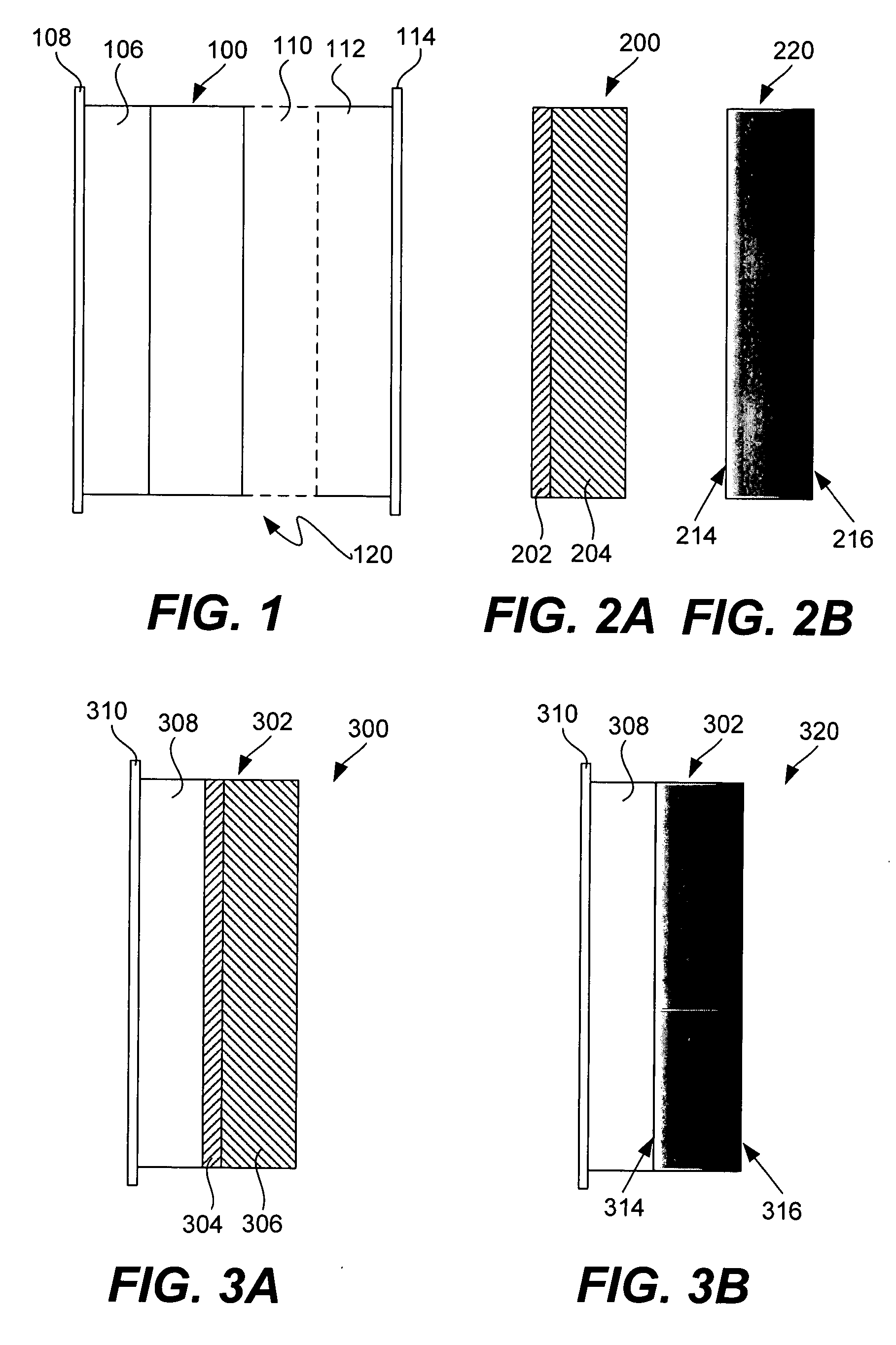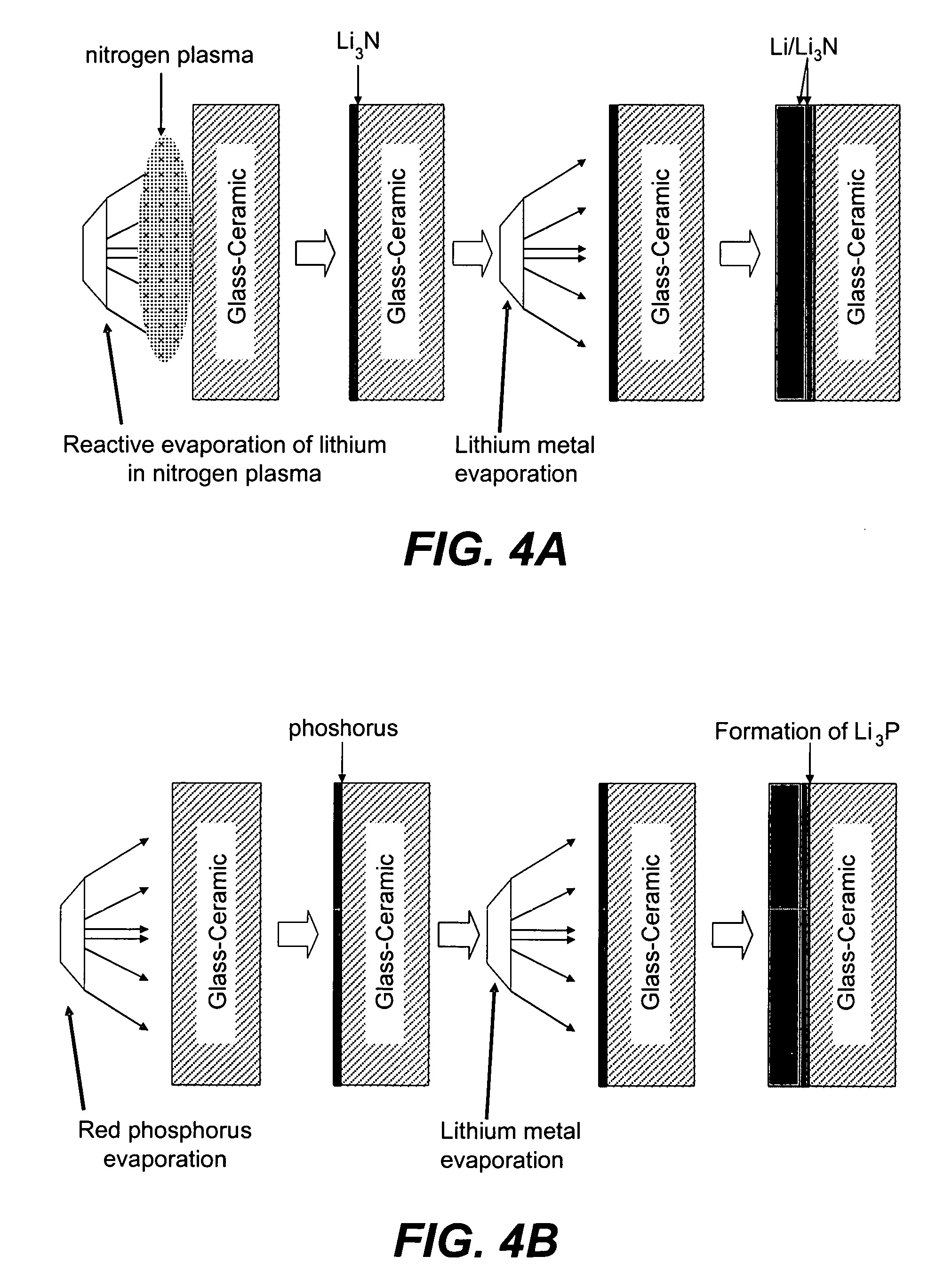Ionically conductive membranes for protection of active metal anodes and battery cells
a technology of active metal anodes and ionically conductive membranes, which is applied in the direction of non-aqueous electrolyte cells, cell components, cell component details, etc., can solve the problems of failure of rechargeable lithium metal batteries
- Summary
- Abstract
- Description
- Claims
- Application Information
AI Technical Summary
Benefits of technology
Problems solved by technology
Method used
Image
Examples
first embodiment
[0099] Referring to FIG. 6A, this aspect of the present invention is shown. A polymer layer and a layer of iodine are coated on a second layer material surface and allowed to react forming polymer-iodine complex.
[0100] According to this method, a thin layer of polymer may be applied to the second material layer (e.g., conductive glass) using brushing, dipping, or spraying. For example, a conductive glass layer may be coated with a thin (e.g., 0.5 to 2.0 micron, preferably 0.1 to 0.5 micron) layer of P2VP in this way.
[0101] One technique for applying an iodine coating is sublimation of crystalline iodine that can be achieved at room temperature (e.g., about 20 to 25.degree. C.) in a reactor placed in the dry box or in a dry room. A sublimed layer of iodine can be made very thin (e.g., 0.05 to 1.0 microns and the rate of sublimation can be adjusted by varying the temperature or distance between the substrate and source of iodine.
[0102] Alternatively, high concentrations (e.g., 50 to 1...
example
[0106] The following examples provide details illustrating advantageous properties, in particular very low impedance, of composite membrane protective structures in accordance with the present invention on lithium electrodes. These examples are provided to exemplify and more clearly illustrate aspects of the present invention and are in no way intended to be limiting. Example 1
Impedance Measurements Using LIPON in Composite Protective Layer
[0107] Approximately 0.75 microns of LiPON was RF sputter-deposited onto copper foil samples in a MRC 8671 Sputter Deposition system. Some of the copper foil samples were coated with an additional layer of Cu.sub.3N (approximately 0.9 microns) by RF Magnetron sputtering of a copper target in a nitrogen environment. One LiPON / Cu sample was transferred to a vacuum evaporator, and approximately 3 to 7 microns of lithium metal was evaporated directly onto the LiPON surface. Another Cu.sub.3N / LiPON / Cu sample was coated with a similar thickness of lithi...
example 2
Impedance Measurements Using Glass-Ceramic Active Metal Ion Conductor (OHARA) in Composite Protective Layer
[0108] Samples of Li.sup.+ conductive glass-ceramic plates were received from OHARA Corporation. Approximately 3 to 7 microns of lithium was evaporated directly onto the OHARA glass-ceramic plate. The deleterious reaction of lithium with the electrolyte is seen in FIG. 8A; the impedance of the sample is quite large, approximately 40,000 .OMEGA.cm.sup.2. A film of Cu.sub.3N (about 0.9 microns thick) was RF Magnetron sputter-deposited onto a second sample of glass-ceramic plate, with subsequent evaporation of about 3 to 7 microns of lithium. The beneficial effect of the Cu.sub.3N film can be seen in FIG. 8B; the impedance of the glass-ceramic is dramatically improved relative to the plate without the Cu.sub.3N film. Superimposition of FIGS. 8A and 8B in FIG. 8C further illustrates the dramatic improvement in performance for the Cu.sub.3N protected plate. The ionically conductive ...
PUM
 Login to View More
Login to View More Abstract
Description
Claims
Application Information
 Login to View More
Login to View More - R&D
- Intellectual Property
- Life Sciences
- Materials
- Tech Scout
- Unparalleled Data Quality
- Higher Quality Content
- 60% Fewer Hallucinations
Browse by: Latest US Patents, China's latest patents, Technical Efficacy Thesaurus, Application Domain, Technology Topic, Popular Technical Reports.
© 2025 PatSnap. All rights reserved.Legal|Privacy policy|Modern Slavery Act Transparency Statement|Sitemap|About US| Contact US: help@patsnap.com



